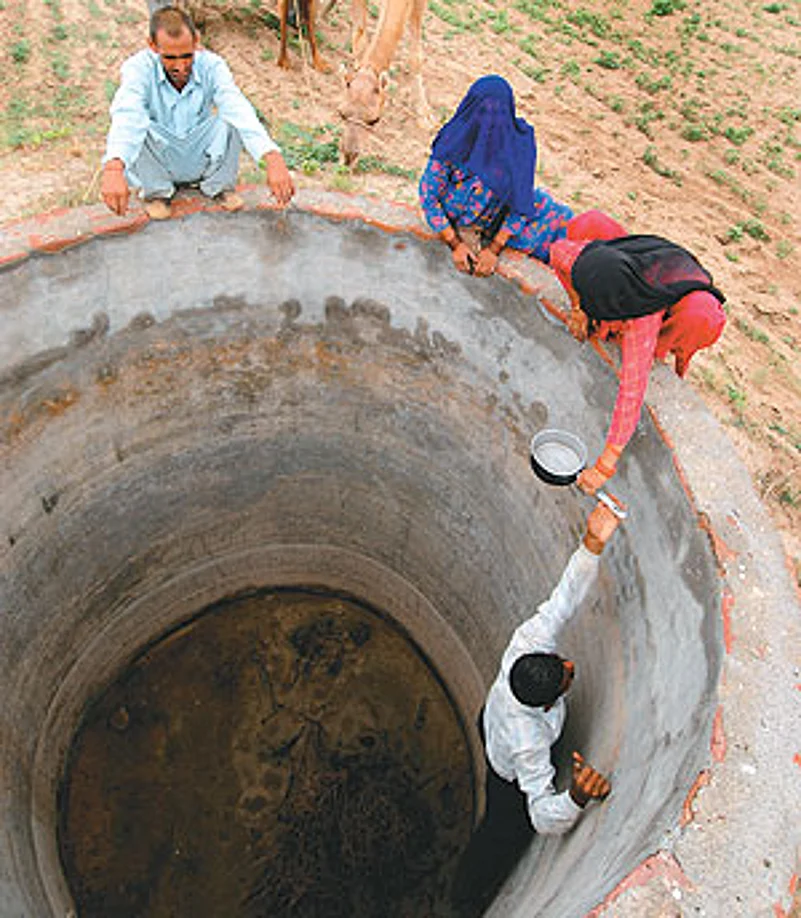It wasn’t easy to persuade Banwari Lal, a farmer with 22 acres of land in Bakhtawarpura village of Haryana’s Bhiwani district, to show us his withered fields. “Just the sight of my fields is painful,” he says. “I’ve spent most of the last month trying in vain to save at least some of the bajra crop.” The canal that irrigates part of his land has been dry since March; water from Lal’s two tubewells has gone brackish. All that remains is a scattered, stunted growth of some bajra that Lal’s wife Pushpa has taken to uprooting daily. “At least I can use the green leaves to feed our four head of cattle,” she says.

This is southern Haryana, where rainfall deficiency this year has been as high as 73-88 per cent. Vast swathes of land haven’t seen more than a meagre shower. As the overall rainfall deficiency in the state is put at 53.7 per cent, a jittery state government—preparing, as it happens, for early assembly elections in a couple of months—is hesitant to declare any district drought-hit. Though the official line is that the situation is not “so bad”, privately, officials concede the government doesn’t want to create resentment by dishing out drought relief only in some districts.
That’s why chief minister Bhupinder Singh Hooda rejected the 50 per cent diesel subsidy announced by the Centre. The reason: it would create resentment in the nine districts to which it wouldn’t apply. Instead, he has sought relief of Rs 1,000 per hectare across-the-board to compensate farmers. Though perhaps politically more expedient, that would still be too little and too late for farmers. Drought relief, on the other hand, is Rs 6,750 per hectare, but applicable only after districts are declared drought-hit.
Lal has spent Rs 20,000 just to sow his fields, borrowing most of the money. He wants the government to reimburse at least some of the money spent on sowing and says the subsidy on diesel would have helped. But no one bothered to ask him—or the hundreds of other farmers in the state’s paddy belt. The state government’s only contribution to mitigate the farmer’s hardship so far has been to ensure at least eight hours’ power supply daily in the last month. But this isn’t enough.
It is estimated that there will be a shortfall of 1.2 lakh hectares under paddy; total shortfall of kharif cultivation is expected at 3.42 lakh hectares. The cost of fodder has tripled and availability of water in the state canal system is down by more than 50 per cent. The consumption of diesel in the state has gone up by 40 per cent in the last month as desperate farmers buy huge amounts of diesel on credit to run pumps.
The anger is bubbling over. There are daily agitations by the All India Kisan Sabha and the Bharatiya Kisan Union. In Bhiwani, a junior engineer in the electricity department was made to climb up an electricity pole and stay there till police rescued him. And at Ratia, some days ago, angry villagers took over an electricity supply unit and tried to run it themselves.

















